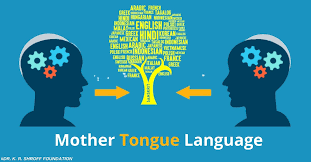Role of Contemporary High-Tech in Promotion of Mother Languages
Omer Rauf, Dr. Muhammad Adil
(This Research Article is selected from Pakistan Journal of Languages; a Research Journal published by Gandhara Hindko Academy Peshawar)
Abstract:
This paper discusses importance of mother languages, the role of technology in promoting them and how local communities can play an important role to learn and promote their mother languages with the help of computer technology.
Introduction:
It has been estimated by numbers of research papers, articles, journals, books that roughly 90 % of worlds approximately 6000 languages are on edge of extinction within the next 100 years. (E.g. Robins and Uhlenbeck 1991: Krauss 199; Crystal 2000: Nettle and Romaine 2000: Gibbs 2002; Abley 2003; Dalby 2003). Some linguistics thinks that approx. 50 % of the world known languages has extinct over the past 500 years. Nettle and Romaine (2000: 2). Crystal (2000: 10) predicts that in every two weeks one language may disappear over the next 100 years. If all of the above is true, then very few languages will survive and have secure future.
Mother language has played a considerable part in creation and development of people’s identity. As we Know that natural resources are vital for a sustainable life, so we care about them a lot. Similarly, we should consider our mother language as a natural resource because they are an important part of our local eco system that we must support in order to sustain global diversity.
Recent advancement in technology such as laptops, tablets, smart phones, is changing people lives. It is not only helping us in thinking new way but also helping us in doing day to day activities in a better way, easily, quickly and with much lower cost. Whether it’s learning new things, socializing with other people, spreading out news views, communicating around the world, thus technology is taking us to new level.
Warschauer (1998) and Hartle-schutte and Nae’ole-Wong (1998) mentioned that these advancement in technology are playing a significant role in promotion of mother languages especially in preserving them, content development and their promotion, and different modes of communication.
Role of High Tech in Promotion of Mother Languages:
Due to the rapid advancement in technology, local communities are converting and storing paper-based contents (newspapers, documents, books etc.) into digital files to make sure that these paper-based materials does not deteriorate. Local communities are highly concerned that something should be done for the information that was traditionally passed orally from one generation to other in their mother languages. “The risks of sharing information are less dangerous at the present time than the risk that it may otherwise be lost forever” Dauenhauer & Dauenhauer (1998) (p.92).If we convert, store and share all this information using technology (Software, databases, etc.), indigenous languages, tradition and culture will not only be promoted globally but preserved for the future generations.
In order to promote their mother languages, local communities have embraced different technologies, from audio/video to multimedia, software’s to mobile apps and local storage to cloud computing (Penfield, Cash Cash, Galla, Williams & Shadow Walker, 2006).
With the invent of internet, information and communication technology has been developed rapidly which not only created authentic but also useful environment necessary to create, promote and disseminate content. High end advancement provides multimodal and human-computer interaction allowing speakers and learners to adapt to the modern world beyond the traditional keyboard and mouse input/output. The internet just like any language deals with the information resources and their use in communication, making it more useful to promote and educate language skills.
The advancement in mobile phones is by far the highest advancement in history of technology. It has embedded itself in the lives of every person. Its evolution from basic to smart phone was based on growing necessity & expectation of users as well as high end technological advancements. As a result, we now have slim, stylish, colorful smartphone which is also easy to carry around. Smart phone does not only mean a handset but tablets, net books, wearable technology (likes mart watches, virtual reality glasses, etc) also comes in its definition.
The real power of smart phones comes with the applications it runs on. From operating system to mobile apps, all these applications are powering smart phones. Every news OS version creates new apps thus helping users to use them in order to create, promote, share, learn, educate information. Content (Newspapers, books, documents, language courses), are converting into mobile apps thus available in everyone’s pocket.
Conclusion:
Since technology is so much a part of today’s culture, the future of mother languages will depend partly on technology to create and promote content. Recent publications have shown that communities are turning toward computer games and integrating languages and culture material to engage indigenous students to learn their language. This shows that technology has a positive impact in promotion languages.
References:
Ø Abley, Mark. 2003. Spoken here. Travels among threatened languages. Toronto, ON: Random House of Canada.
Ø Crystal, David. 2000. Language death. Cambridge, UK: Cambridge University Press.
Ø Dalby, Andrew. 2003. Language in danger. How language loss threatens our future. Harmondsworth, UK: Penguin.
Ø Dauenhauer, N.M., & R. Dauenhauer. (1998). Technical, emotional, and ideological issues in reversing language shift: examples from Southeast Alaska. In L.A. Grenoble & L.J. Whaley (eds.), Endangered languages (pp. 57-98).Cambridge, UK: Cambridge University Press.
Ø Gibbs, W. Wayt. 2002. Saving dying languages. Scientific American 287-78-86.
Ø Krauss, Michael. 1992. The world’s languages in crisis. Language 68.4-10.
Ø Nettle, Daniel, and Suzanne Romaine. 2000. Vanishing voices. The extinction of the world’s languages. Oxford, UK: Oxford University Press.
Ø Penfield , S., Cash Cash, C.K. Galla, T. Williams & D. Shadow Walker. (2006).
Ø Robins, Robert Hl., and Eugenius M. Uhlenbeck, eds. 1991. Endangered languages. Oxford, UK: Berg.
Ø Warschauer, M. (1998). Technology and indigenous language revitalization: Analyzing the experience of Hawai’i. Canadian Modern Language Review 55 (1), 140-61
Ø Zhao, Y. (2003). Recent Development in Technology and language Learning: A Literature Review
and Meta-analysis. CALICO journal, 21, (1),7-27









